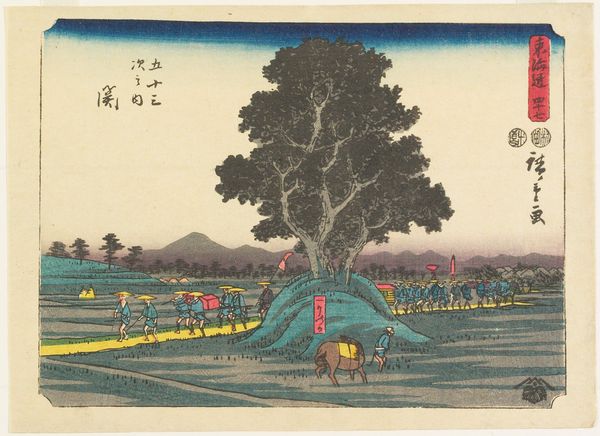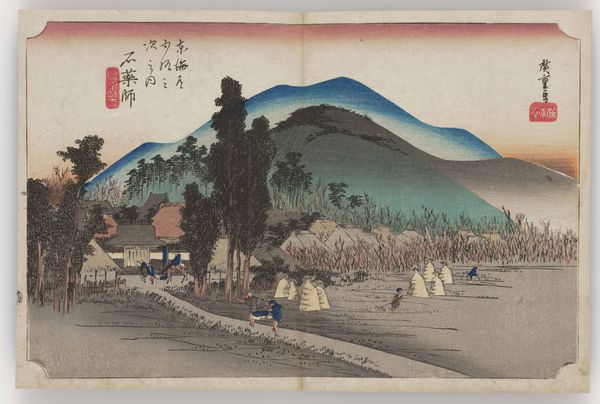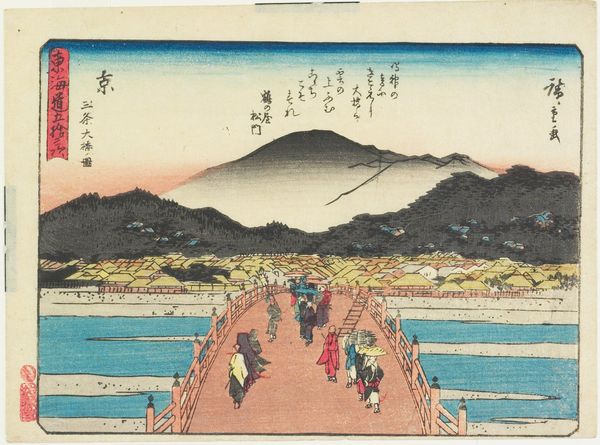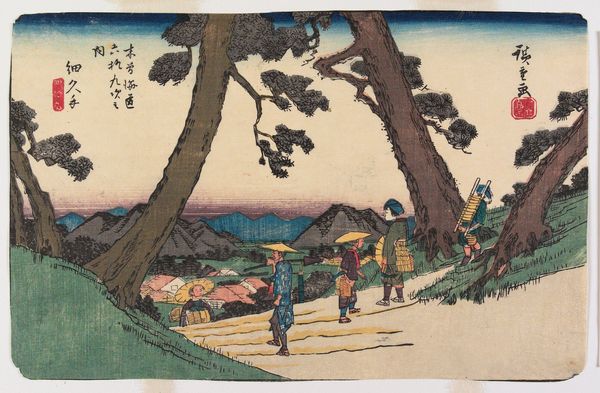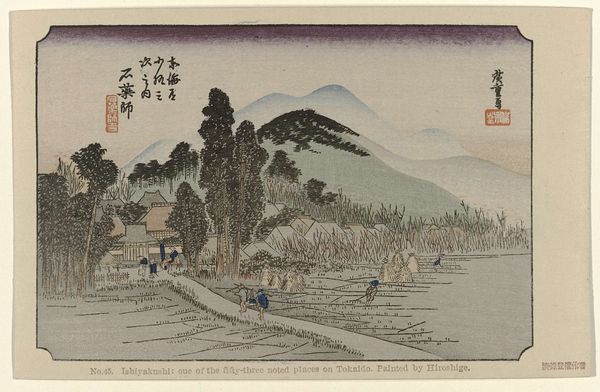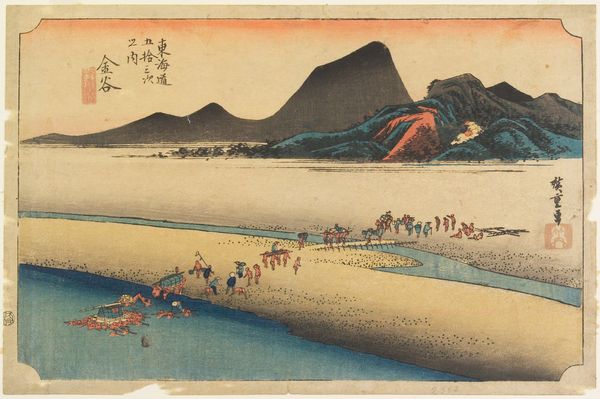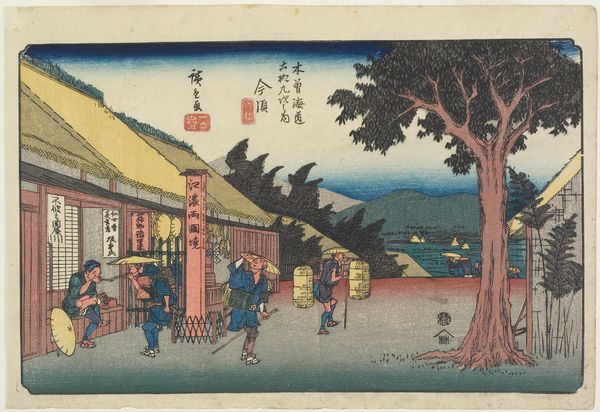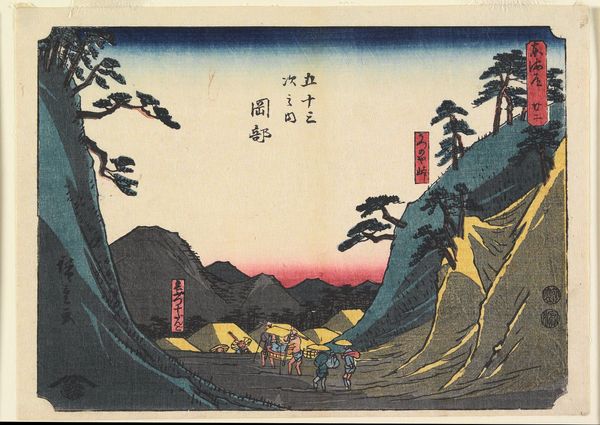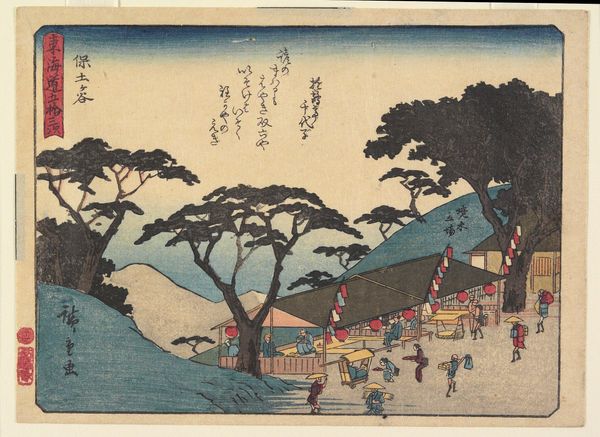
print, plein-air, ink, woodblock-print
# print
#
plein-air
#
asian-art
#
landscape
#
ukiyo-e
#
japan
#
ink
#
woodblock-print
#
realism
Dimensions: 8 7/8 × 13 3/4 in. (22.5 × 34.9 cm) (image, sheet, horizontal ōban)
Copyright: Public Domain
Editor: Here we have Hiroshige’s "Ishiyakushi," made around 1832 or 33. It’s a woodblock print with ink, and the scene has such a quiet, industrious feel to it. What strikes you when you look at this print? Curator: Immediately, I’m drawn to the labor depicted. We see workers in the rice fields. These fields weren't just picturesque landscapes; they were sites of intense agricultural production, directly tied to the economic and social structures of Edo-period Japan. How do the materials – the woodblock, the ink, the paper – inform your understanding? Editor: I hadn’t thought about the fields as strictly sites of production. The fact that it’s a print also highlights how this image, or at least something similar, could be widely circulated and consumed. Curator: Precisely! Consider the woodblock itself. The act of carving, printing, and distributing transformed the artist’s vision into a commodity, one accessible to a growing urban audience hungry for representations of the countryside. This print blurs the lines between art object and a manufactured product. The labour isn't just *in* the field, it's behind the scenes too! Editor: That makes me rethink my initial impression. The 'quiet' feeling I got might actually mask a really complex system of production and consumption. Curator: The apparent 'realism' also needs unpacking. How 'real' is this, when we consider the stylized representation dictated by the medium of woodblock printing and the artistic conventions of Ukiyo-e? Editor: It’s fascinating to consider how even something seemingly simple like a landscape print is actually loaded with social and economic context related to materials, labor, and distribution. Curator: Absolutely. By looking at these prints through a materialist lens, we can understand art as a product of its time, reflecting both the beauty and the socio-economic realities of its creation.
Comments
No comments
Be the first to comment and join the conversation on the ultimate creative platform.

